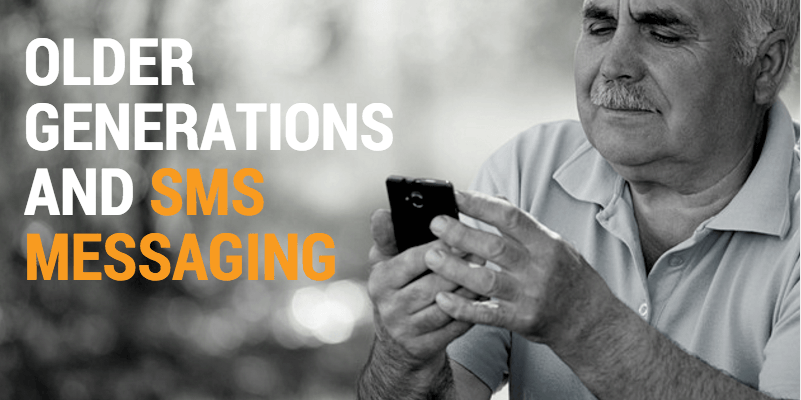SMS vs. Instant Message App Marketing

It seems there’s a new messaging app popping up every month. Maybe even more frequently than that. It’s hard to keep track of them all, but it’s also hard to ignore them if you’re looking to use mobile marketing. When you’ve got limited marketing resources, should you spend them advertising on the latest instant message (IM) app, or go with SMS marketing?
It’s a good question to ask, so lets look at them both first before making a decision.
In the UK in 2013, Whatsapp, closely followed by Facebook messaging, dominated the mobile IM market according to Statista (Facebook bought Whatsapp earlier this year). The next closest are Twitter and Apple’s iMessage. Statista also reports that 33% of Brits are interested in free or low cost instant messaging, but 37% were not interested at all (the rest didn’t even know there were options!).
Clearly people like their IM apps (even if they aren’t free). International Business Times (IBT) reported in January of this year that more IMs were sent in 2013 than SMS messages. They predict the trend will continue through 2014 and beyond. So does it make sense to jump right into IM marketing before the SMS boat sinks?
Not so fast.
The IBT article also said that SMS will continue to generate more revenue than IM apps. And the ultimate objective of all marketing is to bring in revenue by generating more web site traffic, in store sales, or other activity.
There are lots of reasons SMS will continue to do this better than IM apps, but here are the main ones:
- SMS is the only universal solution. Anyone with a mobile phone can receive a SMS message. If you market using an IM app, you’ll have to repeat or recreate the campaign for each app you target. If there ever is an app that everyone uses, then this may change. But for now it looks like SMS is the only way to reach anyone and everyone on their mobile phone.
- Open and read rates for SMS are very high and fast. It’s hard to find any solid data on how often and fast messages sent via IM are read, but for marketers you may not be using the message feature of an IM app anyway. For some apps the only option may be to use mobile banner or video ads. Others are more like social networks where you can collect followers and share your brand or products via messages. In either case, you’re not going to see the immediate response you may get with SMS.
- No hoops to jump through. SMS marketing has a legally defined opt-in process. But when you start looking at using mobile IM apps, the way to reach your customers (or potential customers) can be totally different. You may have to go through the process of getting people to “like”, “follow”, or connect with you before you can message them directly the way you can with SMS. There are undoubtedly as many methods as there are IM apps out there. In comparison, running an opt-in campaign for SMS is simple.
- SMS provides a pre-qualified list. When you think about it, people that opt in to receive SMS messages really want to hear from you. SMS is, or can be, a very intrusive and personal form of communication. You’re contacting them on their private mobile number after all. There’s much more trust and expectation involved in a SMS opt in than just having someone follow you or see your ad while using their IM app. These people will be much easier to sell to than a casual connection in an app.
It’s no wonder why IBT predicts SMS will continue to generate more revenue than IM apps – about 50 times the revenue generated by all the IM apps combined. So if you can only pick one channel – SMS or IM app – my bet would be on SMS. Do you agree?
Related Articles
Older Generations and SMS Messaging
50% of people between 55 and 64 own a smartphone and 18% of people over 65 do too. If you’re trying to reach out to these older demographics, it might be time to consider mobile marketing. But what kind should you choose?
How to build up your mailing list after GDPR
The Never-Ending Conflict of Email vs. SMS Marketing
Many marketers think they need to choose between email and SMS marketing. And depending on what you read, you’ll find one is “better” than the other. But that isn’t necessarily true. Learn how a united effort using both can increase your profits with only a little bit of effort.
More Examples of Calls to Action in an SMS Message
In a previous article I shared two examples of SMS marketing messages I received and how their call to action worked, or not. This time I want to share two more examples to help you in crafting the perfect call to action for your SMS marketing messages.
Why SMS Marketing Can Be More Effective Than Mobile Banner Advertising
A recent eMarketer article on the effectiveness of mobile banner advertising reports the main reason people don't click is because they aren't interested in the offer. In fact, only 24% of those surveyed say they clicked on a mobile banner on a website in the last three months.
How and why you need to provide excellent customer service
How SMS Messaging can Boost your Social Media Marketing
Is your social media struggling? Read this article to learn how businesses of every shape and size can use SMS messaging to drive social media engagement and generate revenue from increased brand exposure. Whether the goal is to support a one-off sales campaign or a long term drive to increase reach, SMS messaging offers an unparalleled opportunity to make your brand's voice heard in the increasingly noisy social media space.
5 Amazing SMS Statistics from Salesforce
Every year Salesforce releases its State of Marketing report. It offers insight into how marketers use and see the various tools and channels available today. In the 2016 report, much of the content focused on social and email, but also included a good deal of information on mobile marketing too.












